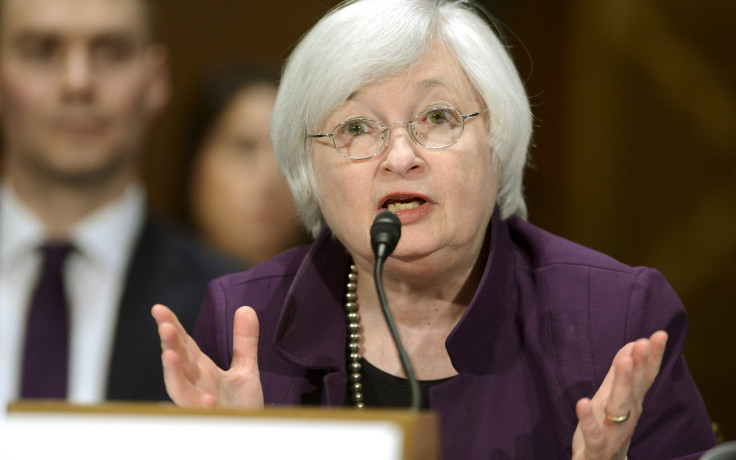Federal Reserve Beige Book Reveals Businesses Are Experiencing 'Modest' Effects From China's Slowdown

Amid the recent stock market turmoil and concerns of a slowing global economy, the U.S. Federal Reserve’s latest Beige Book, released Wednesday, revealed something telling. China, the world’s second-largest economy, was mentioned eight times in the report, more than the previous five Beige Books combined.
The word “China” did not appear in the previous Beige Book released on July 15, and it appeared just twice in the Beige Book released in early June 2015, noted John Canally, investment strategist and economist at LPL Financial, in a research note. Prior to Wednesday’s report, the five Beige Books released in 2015 mentioned China a total of just six times -- about one mention per issue. The latest Fed release arrives as financial markets remain on edge, fearing that the downturn in the Chinese economy could cause a global economic downturn.
The Beige Book, which the central bank publishes eight times a year, highlights the current condition of the U.S. economy in each of the Fed's 12 districts. It covers a range of economic activity, from manufacturing to construction to wage growth, and gives economists a glimpse of the economy's current status.
The report released Wednesday included information collected on or before Aug. 24. The report summarizes anecdotal comments from businesses and other contacts outside the Federal Reserve and is not a commentary on the views of Fed officials.
In August, many of the Fed’s contacts in the Boston district mentioned China as a "performance factor," but the effects were "modest." Reports from three districts explicitly mentioned the Chinese slowdown as a factor, noting reduced demand for wood products in San Francisco, chemicals in Boston and high-tech goods in Dallas.
In the manufacturing sector, one contact, a producer of biotechnology equipment, told the Fed its sales in China exceeded expectations in the most recent period. However, a manufacturer of systems for new buildings reports a definite softening in construction activity in China, which affects demand for its products.
Meanwhile, a manufacturer of building equipment says that the China slowdown will eventually lead to "cost containment" in its U.S. operations, including broad hiring restrictions in the near future, even on business lines with no exposure to China.
In the information technology sector, one firm in the Boston district reported decreases in revenues, due to “weakened demand in China and the strong U.S. dollar,” the Fed said.
The Beige Book for August arrives ahead of the Federal Reserve's highly anticipated meeting on Sept. 16 and 17, which will include a news conference by Fed Chairwoman Janet Yellen. Most economists had previously anticipated the central bank would announce raising interest rates this month for the first time in nearly a decade, but some experts have pushed out their expectations to a later date, following the recent stock market volatility.
"We are now assuming that, even if the rally in global stock markets continues, some Fed officials will still want to hold off on raising interest rates until October or even December," Paul Ashworth, chief U.S. economist at Capital Economics, said in a note this week.
But there is a bright spot: The U.S. economy continued to expand this summer after last winter's lackluster showing. The Federal Reserve’s Beige Book revealed Wednesday that the economy grew at a “modest to moderate” pace in the past few months as economic activity continued to expand across most U.S. regions and sectors during July to mid-August, the Federal Reserve said Wednesday.
Each of the Fed’s Beige Books is published two weeks before the Federal Open Market Committee (FOMC), which is composed of the Fed's seven boards of governors and five Reserve Bank presidents.
© Copyright IBTimes 2025. All rights reserved.






















